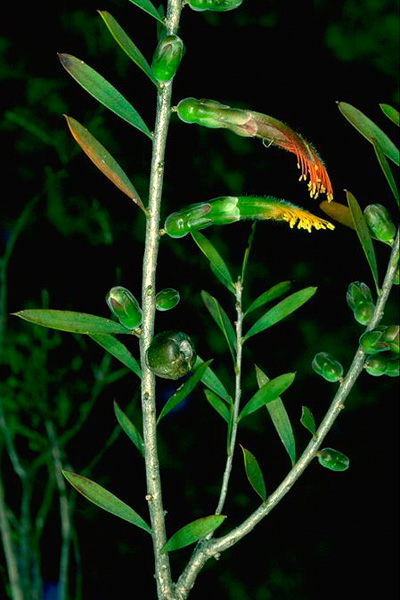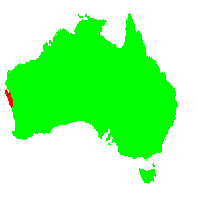General Description:
Lamarchea is a small genus of two species, both of which occur in Western Australia. The flowers are superficially similar to those of Calothamnus but Lamarchea is more closely related to Melaleuca.
Lamarchea hakeifolia is a large shrub or small tree 2-5 metres high. There are two recognised varieties:
- var. hakeifolia – leaves narrowly oblong, tapering to a point at the apex and up to 50 mm long by 6-8 mm wide.
- var. brevifolia – leaves similar to var. hakeifolia but shorter – to about 20 mm long.
Both varieties occur in the same general area south of Shark Bay, with var. brevifolia having the more southerly distribution.
The flowers occur singly on the older branches from late winter to spring, sometimes extending into summer. They are initially greenish yellow in colour and age to a dull red. Flowers are followed by globular-shaped fruit about 10 mm diameter.
Although not widely cultivated, L.hakeifolia is hardy in drier climates in sub-tropical and temperate regions. It is likely to be less reliable in more humid and wetter regions of the east coast. Horticulturally, it is more interesting than attractive, but the flowers are visited by honey-eating birds.
Propagation can be carried out from seed which does not require any pre-treatment. Cuttings of firm, current season’s growth can be expected to strike reliably.

Lamarchea hakeifolia var. brevifolia
Photo: Murray Fagg – Australian National Botanic Gardens
 Australian Native Plants Society (Australia)
Australian Native Plants Society (Australia)